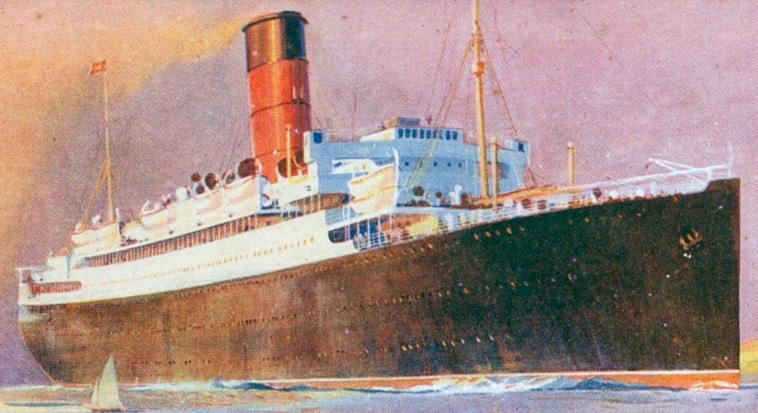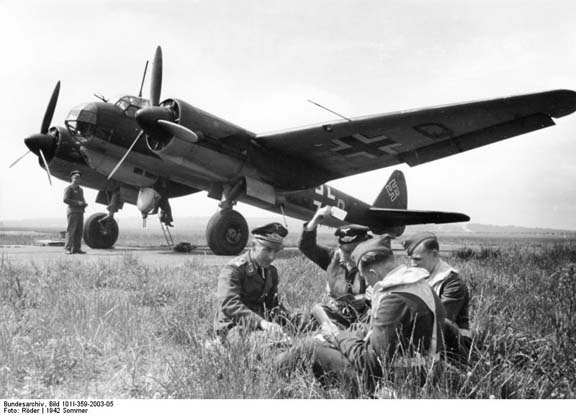General Discussion
Related: Editorials & Other Articles, Issue Forums, Alliance Forums, Region Forums79 Years Ago Today;RMS Lancastria is attacked and sunk by the Luftwaffe - over 3000 lost

A postcard of RMS Lancastria from 1927
RMS Lancastria was a British ocean liner requisitioned by the UK Government during World War II. She was sunk on 17 June 1940 during Operation Ariel. Having received an emergency order to evacuate British nationals and troops in excess of its capacity of 1,300 passengers, modern estimates range between 3,000 and 5,800 fatalities—the largest single-ship loss of life in British maritime history.
<snip>
Fate

Lancastria sinking off Saint-Nazaire
The Lancastria was sunk on 17 June 1940 off the French port of St. Nazaire while taking part in Operation Ariel, the evacuation of British nationals and troops from France, two weeks after the Dunkirk evacuation. After a short overhaul, she had left Liverpool on 14 June under Captain Rudolph Sharp (born 27 October 1885) and arrived in the mouth of the Loire estuary on 16 June. She anchored 11 miles (18 km) south-west of St. Nazaire.
17 June 1940
By the mid-afternoon of 17 June she had embarked an unknown number (estimates range from 4,000 up to 9,000) of civilian refugees (including embassy staff and employees of Fairey Aviation of Belgium), line-of-communication troops (including Pioneer and Royal Army Service Corps soldiers) and Royal Air Force personnel. The ship's official capacity was 2,200 including the 375-man crew. Captain Sharp had been instructed by the Royal Navy to "load as many men as possible without regard to the limits set down under international law".
At 13:50, during an air-raid, the nearby Oronsay, a 20,000-ton Orient Liner, was hit on the bridge by a German bomb. Lancastria was free to depart and the captain of the British destroyer HMS Havelock advised her to do so; but, without a destroyer escort as defence against possible submarine attack, Sharp decided to wait.
Losses

Lancastria sinking off Saint-Nazaire
A fresh air raid began before 16:00. Lancastria was bombed at 15:48 by Junkers Ju 88 aircraft from Kampfgeschwader 30. Three direct hits caused the ship to list first to starboard then to port, while a fourth bomb fell down the ship's smokestack, detonating inside the engine room and releasing more than 1,200 tons of crude oil into the Loire estuary. Fifteen minutes after being hit, Lancastria began to capsize and some of those who were still on board managed to scramble over the ship's railing to sit on the ship's underside. Lancastria sank within twenty minutes.
When German aircraft began strafing survivors in the water, the fuel oil which had leaked into the sea ignited, and was quickly transformed into a flaming inferno. Many drowned; others were choked by the oil, or were shot by strafing German aircraft.
Survivors were taken aboard other evacuation vessels, the trawler HMT Cambridgeshire rescuing 900. There were 2,477 survivors, of whom about 100 were still alive in 2011. Many families of the dead knew only that they died with the British Expeditionary Force (BEF); the death toll accounted for roughly a third of the total losses of the BEF in France. She sank around 5 nmi (9.3 km) south of Chémoulin Point in the Charpentier roads, around 9 nmi (17 km) from St. Nazaire. The Lancastria Association names 1,738 people known to have been killed. In 2005, Fenby wrote that estimates of the death toll vary from fewer than 3,000 to 5,800 people although it is also estimated that as many as 6,500 people perished, the largest loss of life in British maritime history.
Rudolph Sharp survived the sinking and went on to command the RMS Laconia, losing his life on 12 September 1942 in the Laconia incident off West Africa.
Availability of information
The immense loss of life was such that the British government suppressed news of the disaster through the D-Notice system, but the story was broken by the Press Association on 25 July, in the United States by The New York Times and in Britain by The Scotsman on 26 July, more than five weeks after the sinking. Other British newspapers then covered the story, including the Daily Herald (also on 26 July), which carried the story on its front page, and Sunday Express on 4 August; the latter included a photograph of the capsized ship with her upturned hull lined with men under the headline "Last Moments of the Greatest Sea Tragedy of All Time". As part of the government-ordered cover-up, survivors and the crews of the ships that had gone to the aid of Lancastria did not at the time publicly discuss the disaster.
However, there were earlier reports of the sinking and the scale of the disaster from survivors in local British newspapers. Mr H J Cooper is quoted in the Chelmsford Chronicle on 28 June: "I am afraid thousands died, but tell the world they sang 'Roll out the Barrel' as they died." Private Ronald Herbert Yorke (Sherwood Foresters) is quoted in the Ripley and Heanor News on 5 July: "Hundreds of my pals were imprisoned below. They had no chance, because the ship went down in 15 minutes. Those who got away were machine gunned in the water".
In July 2007 another request for documents held by the Ministry of Defence (MoD) related to the sinking was rejected by the British government. The Lancastria Association of Scotland made a further request in 2009. They were told that release under the FOIA would not be given because of several exemptions.
In the face of continued campaigning by relatives, the MoD stated in 2015 that all known documents had long been released through the National Archives.
</snip>
Sherman A1
(38,958 posts)These forgotten pieces of history. ![]()
Truly a sad event.
Kaleva
(36,312 posts)The captain of the ocean liner RMS Lancastria later lost his life while commanding the RMS Laconia.
"To speed up the rescue operation, he ordered three more U-boats to speed to Hartenstein’s aid. Flying the Red Cross flag, U-506 (Erich Wurdeman) and U-507 (Harro Schacht) arrived two days later, just around noon of September 15. They were later joined by an Italian submarine Cappelini. These four submarines shepherded the survivors, with lifeboats in tow and hundreds standing on the decks of the U-boat, they made towards the African coastline for a rendezvous with Vichy French warships dispatched as part of the rescue.
The next morning, September 16, at 11.25am, this concentration of U-boats was spotted by an American B-24 Liberator bomber operating out of Ascension island. The survivors waved and the U-boats signaled for help. As Red Cross flags were draped over their decks, the pilot Lieutenant James D. Harden turned away and radioed back to base for instructions. The officer on duty that day Captain Robert C. Richardson III replied with the order to attack.
Half an hour later, Harden flew back and the survivors felt a sigh of relief on seeing the returning aircraft. They had expected a drop of supplies, of the much needed food and medicine. Instead, they were attacked with a concentration of bombs and depth charges. One bomb landed amidst a lifeboat and hundreds perished during that attack. U-156 was slightly damaged and forced to submerge, leaving hundreds of victims struggling in the water. All the submarines dived and escaped, although U-506 and U-507 returned to the area later, unwilling to desert the people they had saved. Fortunately, Vichy French warships from Dakar arrived the next day and picked up the remaining survivors, so the loss of life from the American action was contained. In total, there were about 1,621 deaths with 1,111 survivors, including those already taken aboard the overcrowded U-boats. This incident left a foul bitterness in the U-boat war that would cast a long shadow over Donitz and his seamen.
The action of Captain Richardson was considered by many as a war crime, although no formal charges were ever placed. As a result of this incident, Admiral Donitz issued an order forbidding U-boats from attempting any rescues and furthermore, from providing any assistance whatsoever to survivors of submarine attacks. He was quoted to say “no attempt of any kind must be made to rescue the crews of ships sunk”. This order became to be known as the “Laconia Order”. Up until now, it was common for U-boats to aid survivors of their attack by providing provisions and pointing out the direction closest to land. Despite the order, some U-boat commanders continued in their practice to aid survivors of their attacks."
http://www.uboataces.com/battle-laconia.shtml
appalachiablue
(41,146 posts)yesterday the German WWII film 'Das Boot' (1981) was on cable, I hadn't seen it since the original release. So realistic, esp. scenes of ship disaster victims struggling in the water. - German *Junkers Ju 88 aircraft that bombed the Lancastria:
